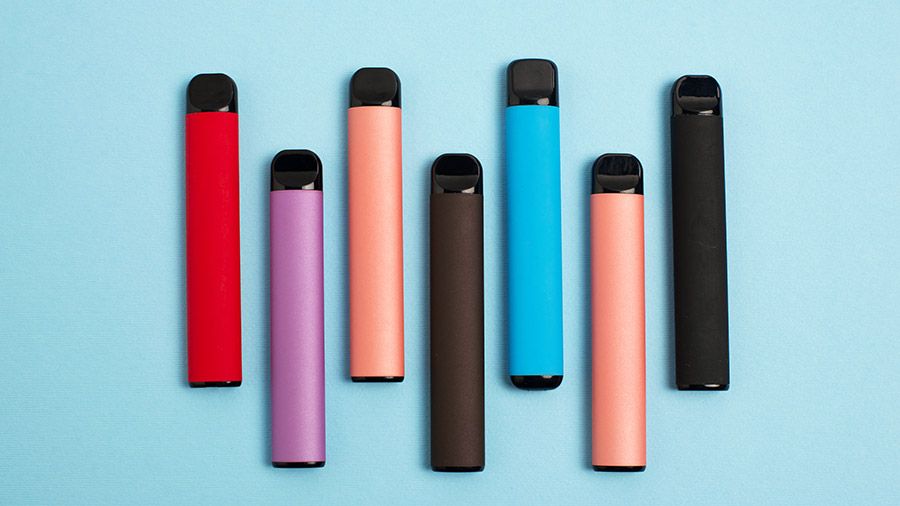In recent years, disposable vapes have surged in popularity, especially among young adults and first-time users drawn in by their convenience, sleek designs, and sweet, fruity flavors. But that rapid growth has triggered a wave of global concern—over youth addiction, environmental waste, and unregulated nicotine content. In response, governments worldwide are cracking down, introducing strict laws that are reshaping the vape market and how users access these products. From Europe’s sweeping bans to shifting regulations in the U.S., Australia, and Asia, here’s how new vape laws are affecting disposable vape users around the world—and what it means for the future of vaping.
1. Europe Leads: Belgium, UK, Ireland & Beyond
Belgium (Effective Jan 1, 2025)
Belgium became the EU’s first country to ban the sale of disposable vapes starting January 1, 2025. The policy aims to curb youth nicotine addiction and reduce environmental harm—citing both health and ecological risks. Health Minister Frank Vandenbroucke emphasized that these cheaply produced devices lure new users and generate hazardous waste.
United Kingdom (From June 1, 2025)
Following Belgium’s lead, the UK government banned all single-use (disposable) vapes as of June 1, 2025. The ban applies regardless of nicotine content and covers both in-store and online retailers. Authorities justify the measure by highlighting the approximately five million disposables thrown away every week and their risk of causing battery fires and environmental contamination.
The Tobacco and Vapes Bill, passed by the UK Parliament in early 2025, further bans vape advertising and packaging using flavors, neural age-based restrictions, and aims to phase out cigarette sales for future generations.
Ireland & Other EU Nations
Ireland is moving forward with a comprehensive ban on disposable e-cigarettes—which is expected to include flavor restrictions and limits on marketing geared toward youth. France has similarly implemented bans on disposable vapes.
2. Other Major Regions: North America to Asia & Africa
United States
In the U.S., while best disposable vapes aren’t banned at the federal level, restrictions on flavor and online sales have been implemented at the state level. States such as California, New York, Massachusetts, and others have banned flavored vapes—including disposables—since 2020–2022. Additionally, FDA actions continue, including warning letters and non-authorization of many disposable flavored brands such as Elf Bar.
Canada
Canada loosely follows the UK’s approach with increasing scrutiny but hasn’t banned disposables outright. Flavored vape bans have been introduced provincially.
Australia & New Zealand
Australia requires nicotine vaping products to be pharmacist-only, effectively banning disposables unless imported by prescription . New Zealand regulates vaping products, allowing only those pre-approved through a notification and specialist retailer process, with no room for unregulated disposable devices.
Asia
Several Asian countries such as India, Thailand, Jordan, Iran, Singapore, and UAE have imposed full bans on vaping products . Malaysia classifies nicotine vapes as pharmaceutical products, banning them in some states .
Africa
Most African nations currently do not regulate disposables under tobacco law, but a few—including Ethiopia, Uganda, Mauritius, and Ghana—have instituted outright bans . South Africa is updating its legislation to regulate all electronic nicotine products under its WHO commitments .
3. Why the Crackdowns?
3.1 Youth Uptake & Health
Disposable vapes’ appeal to teens—via brightly colored designs and candy-flavored e-liquids—has alarmed health authorities. For example, UK data showed a 50% rise in youth vaping year-over-year . Bans aim to reverse this trend and prevent nicotine addiction.
3.2 Environmental & Safety Hazards
Disposable units generate e-waste, featuring plastics, metal circuits, and lithium batteries that are hard to recycle. They cause an estimated 4,292 tonnes of CO₂-equivalent emissions yearly in Scotland alone. Improper disposal also increases the risk of thermal battery fires—in household bins, landfills, and during waste transport .
3.3 Regulatory Gaps
Disposables often circumvent approval systems (e.g., PMTA in the U.S.) and may include unauthorized synthetic nicotine or ‘off-label’ flavors. Regulatory efforts seek to close these loopholes.
4. Impact on Consumers & Market
4.1 User Behavior
Long-time users of disposables must adapt to rechargeable and refillable devices. The initial costs may be higher, but long-term savings are possible. However, transitioning requires learning to handle refills, coils, batteries, and chargers.
4.2 Industry Shift
Vape manufacturers are pivoting to reusable pod systems and refillable tanks. Some are investing in nicotine pouch alternatives. Companies reliant on disposables must innovate or face obsolescence.
4.3 Public & Vaper Support
A GWI study found that around 61% of UK vapers support disposable bans, noting the environmental and safety benefits. However, some express concern about losing a practical cessation tool.
5. What This Means for Global Users
| Region | Status (Disposable Vapes) | User Impact |
| EU (Belgium, Ireland, UK, France) | Banned 2025 | Switch to rechargeables or seek underground options |
| US | Flavor & online sales banned in states; FDA actions | Consumers pay more, shop locally, or go black market |
| Canada | Provincial restrictions | Shift to legal regulated alternatives |
| Australia | Prescription/pharmacy-only | Access still limited, disposables not sold |
| Asia/Africa | Full bans in many countries | Disposables largely unavailable; illegal use |
6. The Road Ahead
- Regulatory strengthening: Additional restrictions on flavor, packaging, and marketing are expected in the UK and likely elsewhere.
- Global trend: More nations, especially in the EU, Australia, and Asia, are expected to follow suit—and the World Health Organization supports this direction .
- User adaptation: Discarded disposables may become socially unacceptable, with users adopting more sustainable options out of necessity and conscience.
7. Advice for Users
- Switch now: If you’re still on disposables in regions where bans are imminent, begin transitioning to regulated rechargeable systems.
- Choose quality: Invest in reputable devices with IECEE/CE certifications to avoid fire risks.
- Recycle smartly: Never toss your old vape in the trash. Use take-back schemes, battery recycling, or hazardous waste centers.
- Stay legal: Check local laws continually—regulations vary widely, especially in fast-changing legal environments like Asia and Africa.
Conclusion
The global clampdown on disposable vapes marks a significant shift aimed at reducing youth nicotine addiction, protecting the environment, and eliminating unsafe, unregulated products. For users, it’s a wake-up call: it’s time to move toward safer, sustainable alternatives. For independents and large manufacturers alike, the message is clear—adapt or exit.
As 2025 unfolds, the world is making a decisive turn away from single‑use convenience—raising essential questions about public health, environmentalism, and personal choice.

